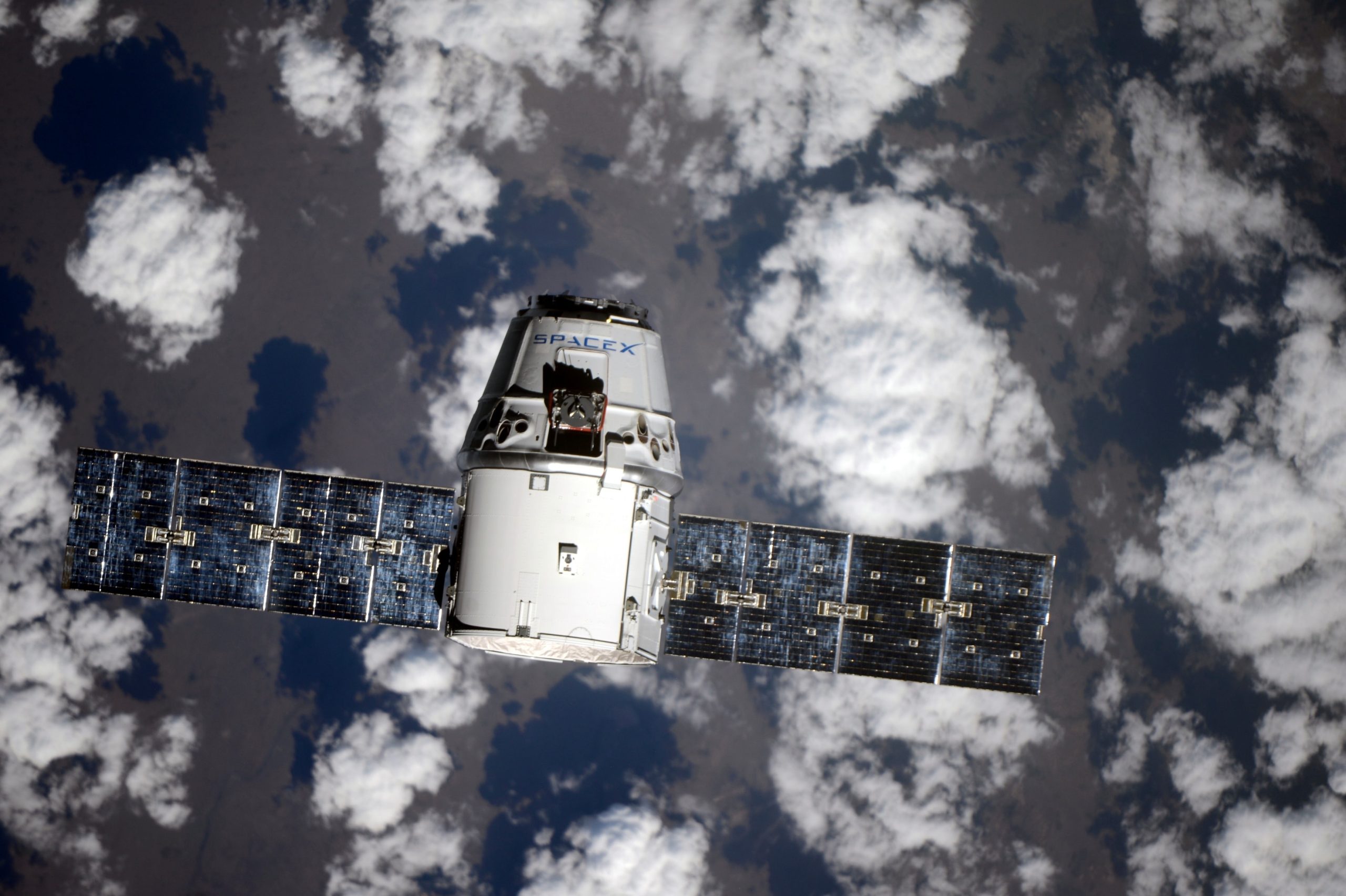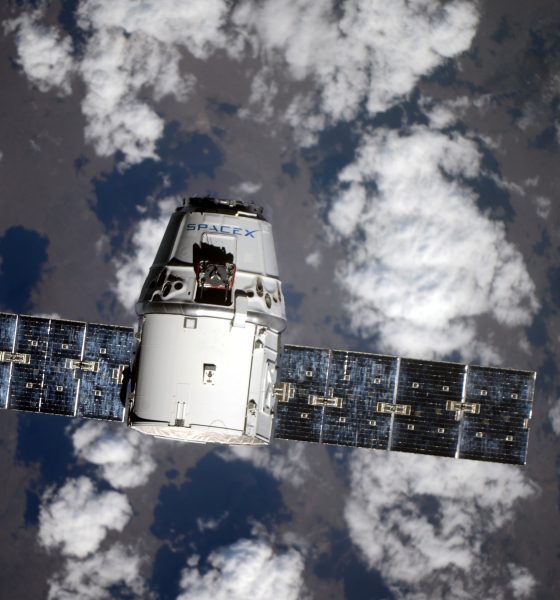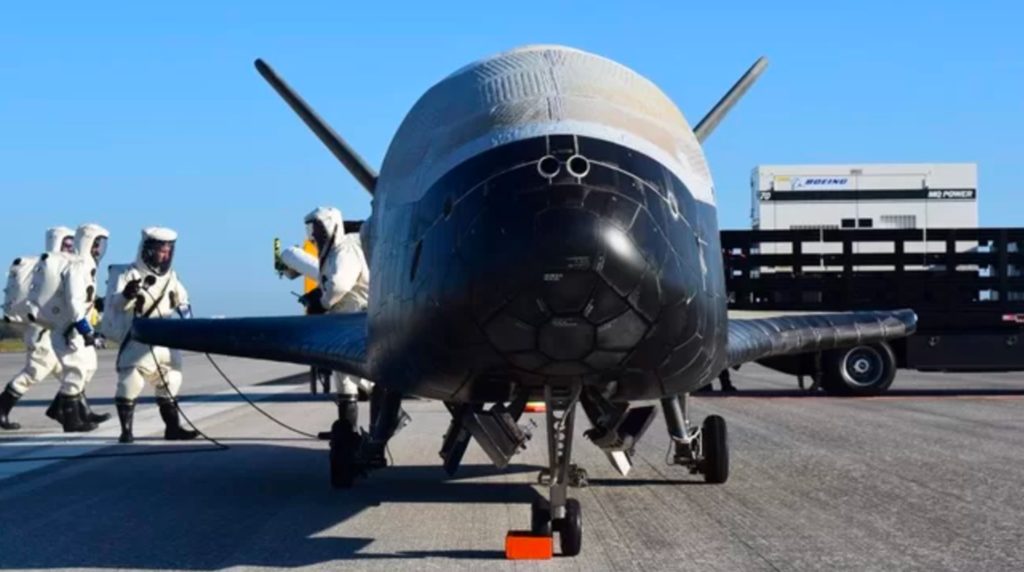

News
SpaceX on track for new launch every other week after CRS-12 success
After Dragon successfully docked to the ISS Wednesday, the station’s crew wasted no time opening the hatch to distribute ice cream for all. The initiation of unloading marked CRS-12’s success, with the Dragon spacecraft and Falcon 9 launch vehicle performing nominally.
The launch of CRS-12 debuted SpaceX’s first Block 4 Falcon 9, carrying with it a variety of small upgrades and improvements. Most importantly, it is understood that the vehicle utilized Merlin engines that have been qualified for higher thrust, although that capability was not used on Monday. The upgrade in thrust, expected to add an additional 10% to the vehicle’s quoted “7,607 kN” thrust at sea level, will enable SpaceX to pursue recoveries during the launch of even heavier payloads. As is now almost routine, SpaceX also recovered the first stage at LZ-1, following some considerably dramatic aerobatics during the return.
Block 4 is a necessary incremental improvement as SpaceX looks to Block 5, which will feature far more visible and significant modifications. Block 5 is expected to conduct its first launch sometime in 2018, and signs point to its debut flight being the launch of SpaceX’s first Commercial Crew demonstration flight, scheduled for NET (No Earlier Than) February 2018.
Focusing on the nearer future, SpaceX will proceed into its first static fire attempt tomorrow ahead of the launch of Formosat-5 from Vandenberg Air Force Base (VAFB), expected to lift off on Thursday, August 24. If all goes well during that campaign, the next milestone will be a static fire ahead of the company’s launch of a USAF experimental spaceplane on September 7, with the static fire for that mission expected approximately a week before. SpaceX appears as dedicated as ever to a regular biweekly launch cadence, which was demonstrated earlier this year, culminating in the launch of three Falcon 9s in less than two weeks. Looking later into September, the only launch with a known date is Iridium-3, which will see SpaceX orbit the next 10 Iridium NEXT satellites from VAFB. The mission is tentatively scheduled for September 30th.
While completing the missions of customers as quickly as possibly is SpaceX’s clear priority, the company also has multiple other goals that will likely make a consistent biweekly cadence more difficult. LC-40 is nearing readiness after a long campaign of refurbishment. Once complete, the pad will likely take over all commercial Falcon 9 launches. Following its activation, LC-39A will proceed through a period of modifications in anticipation of Falcon Heavy and Commercial Crew launches of Falcon 9. This is expected to take at least 60 days. Regardless, SpaceX has repeatedly made it clear that the goal is no launch downtime during the transition between pads. Info recently made public has indicated that SES-11, likely launching on a refurbished Falcon 9, would be the first mission to launch from LC-40 after its reactivation. SES-11 has since been delayed from sometime in September into “Q4 2017”, meaning that LC-40’s return to flight will likely happen no earlier than October.
Aside from Iridium-3’s launch, Elon Musk is also set to present a significant update to SpaceX’s Mars colonization efforts on September 29th. However you look at it, the last several months of 2017 leave fans of spaceflight with a vast array of milestones to look forward to.

News
Tesla starts showing how FSD will change lives in Europe
Local officials tested the system on narrow country roads and were impressed by FSD’s smooth, human-like driving, with some calling the service a game-changer for everyday life in areas that are far from urban centers.

Tesla has launched Europe’s first public shuttle service using Full Self-Driving (Supervised) in the rural Eifelkreis Bitburg-Prüm region of Germany, demonstrating how the technology can restore independence and mobility for people who struggle with limited transport options.
Local officials tested the system on narrow country roads and were impressed by FSD’s smooth, human-like driving, with some calling the service a game-changer for everyday life in areas that are far from urban centers.
Officials see real impact on rural residents
Arzfeld Mayor Johannes Kuhl and District Administrator Andreas Kruppert personally tested the Tesla shuttle service. This allowed them to see just how well FSD navigated winding lanes and rural roads confidently. Kruppert said, “Autonomous driving sounds like science fiction to many, but we simply see here that it works totally well in rural regions too.” Kuhl, for his part, also noted that FSD “feels like a very experienced driver.”
The pilot complements the area’s “Citizen Bus” program, which provides on-demand rides for elderly residents who can no longer drive themselves. Tesla Europe shared a video of a demonstration of the service, highlighting how FSD gives people their freedom back, even in places where public transport is not as prevalent.
What the Ministry for Economic Affairs and Transport says
Rhineland-Palatinate’s Minister Daniela Schmitt supported the project, praising the collaboration that made this “first of its kind in Europe” possible. As per the ministry, the rural rollout for the service shows FSD’s potential beyond major cities, and it delivers tangible benefits like grocery runs, doctor visits, and social connections for isolated residents.
“Reliable and flexible mobility is especially vital in rural areas. With the launch of a shuttle service using self-driving vehicles (FSD supervised) by Tesla in the Eifelkreis Bitburg-Prüm, an innovative pilot project is now getting underway that complements local community bus services. It is the first project of its kind in Europe.
“The result is a real gain for rural mobility: greater accessibility, more flexibility and tangible benefits for everyday life. A strong signal for innovation, cooperation and future-oriented mobility beyond urban centers,” the ministry wrote in a LinkedIn post.
News
Tesla China quietly posts Robotaxi-related job listing
Tesla China is currently seeking a Low Voltage Electrical Engineer to work on circuit board design for the company’s autonomous vehicles.

Tesla has posted a new job listing in Shanghai explicitly tied to its Robotaxi program, fueling speculation that the company is preparing to launch its dedicated autonomous ride-hailing service in China.
As noted in the listing, Tesla China is currently seeking a Low Voltage Electrical Engineer to work on circuit board design for the company’s autonomous vehicles.
Robotaxi-specific role
The listing, which was shared on social media platform X by industry watcher @tslaming, suggested that Tesla China is looking to fill the role urgently. The job listing itself specifically mentions that the person hired for the role will be working on the Low Voltage Hardware team, which would design the circuit boards that would serve as the nervous system of the Robotaxi.
Key tasks for the role, as indicated in the job listing, include collaboration with PCB layout, firmware, mechanical, program management, and validation teams, among other responsibilities. The role is based in Shanghai.
China Robotaxi launch
China represents a massive potential market for robotaxis, with its dense urban centers and supportive policies in select cities. Tesla has limited permission to roll out FSD in the country, though despite this, its vehicles have been hailed as among the best in the market when it comes to autonomous features. So far, at least, it appears that China supports Tesla’s FSD and Robotaxi rollout.
This was hinted at in November, when Tesla brought the Cybercab to the 8th China International Import Expo (CIIE) in Shanghai, marking the first time that the autonomous two-seater was brought to the Asia-Pacific region. The vehicle, despite not having a release date in China, received a significant amount of interest among the event’s attendees.
Elon Musk
Elon Musk and Tesla AI Director share insights after empty driver seat Robotaxi rides
The executives’ unoccupied tests hint at the rapid progress of Tesla’s unsupervised Robotaxi efforts.

Tesla CEO Elon Musk and AI Director Ashok Elluswamy celebrated Christmas Eve by sharing personal experiences with Robotaxi vehicles that had no safety monitor or occupant in the driver’s seat. Musk described the system’s “perfect driving” around Austin, while Elluswamy posted video from the back seat, calling it “an amazing experience.”
The executives’ unoccupied tests hint at the rapid progress of Tesla’s unsupervised Robotaxi efforts.
Elon and Ashok’s firsthand Robotaxi insights
Prior to Musk and the Tesla AI Director’s posts, sightings of unmanned Teslas navigating public roads were widely shared on social media. One such vehicle was spotted in Austin, Texas, which Elon Musk acknowleged by stating that “Testing is underway with no occupants in the car.”
Based on his Christmas Eve post, Musk seemed to have tested an unmanned Tesla himself. “A Tesla with no safety monitor in the car and me sitting in the passenger seat took me all around Austin on Sunday with perfect driving,” Musk wrote in his post.
Elluswamy responded with a 2-minute video showing himself in the rear of an unmanned Tesla. The video featured the vehicle’s empty front seats, as well as its smooth handling through real-world traffic. He captioned his video with the words, “It’s an amazing experience!”
Towards Unsupervised operations
During an xAI Hackathon earlier this month, Elon Musk mentioned that Tesla owed be removing Safety Monitors from its Robotaxis in Austin in just three weeks. “Unsupervised is pretty much solved at this point. So there will be Tesla Robotaxis operating in Austin with no one in them. Not even anyone in the passenger seat in about three weeks,” he said. Musk echoed similar estimates at the 2025 Annual Shareholder Meeting and the Q3 2025 earnings call.
Considering the insights that were posted Musk and Elluswamy, it does appear that Tesla is working hard towards operating its Robotaxis with no safety monitors. This is quite impressive considering that the service was launched just earlier this year.









